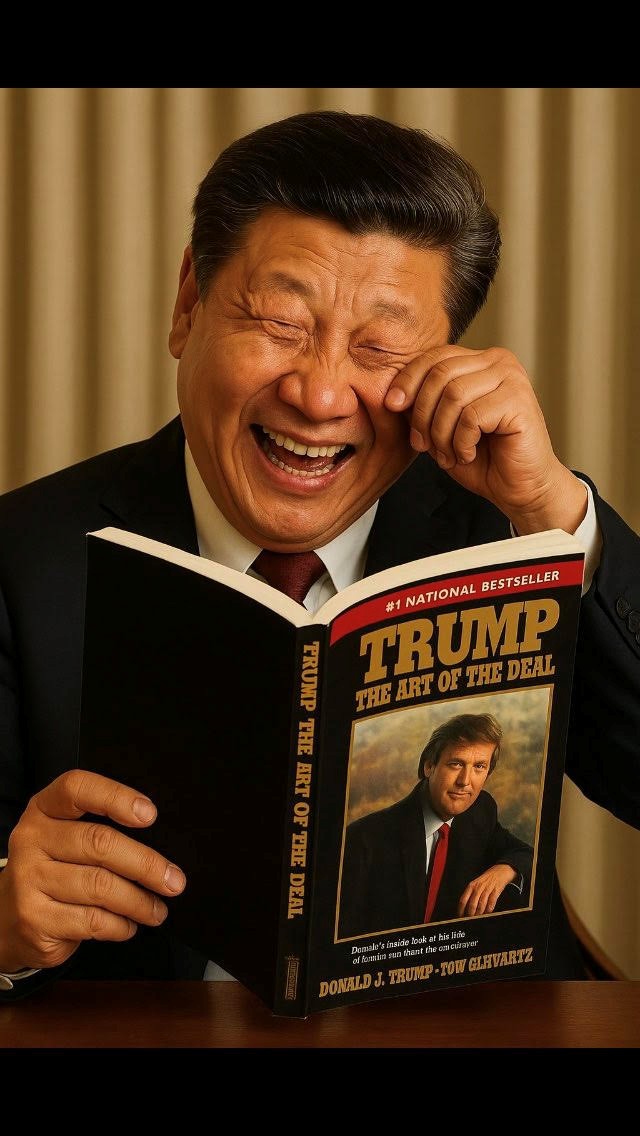Politico: For the second time in two months, President Donald Trump on Wednesday touted a “deal” with China. There’s one problem: It’s largely the same deal the two countries agreed to last month. And the initial readouts of the handshake agreement underscore just how far the Trump administration is from achieving its larger goals in the trade negotiations with Beijing.
- Speaking late Tuesday in front of the ornate London mansion where they’d just held two days of talks, Commerce Secretary Howard Lutnick and U.S. Trade Representative Jamieson Greer told reporters the world’s two largest economies had agreed to ratchet back actions both sides have taken since they announced an initial deal to cool tensions on May 12. The “framework,” as officials from both countries described it, still needs to be approved by Trump and China’s leader, Xi Jinping, and many elements remain outstanding. But the emerging details suggest the Trump administration is at a disadvantage. While the U.S. is promising additional concessions on the export of certain sensitive products to China and restarting Chinese student visas, Beijing has only recommitted to a pledge it made a month ago — lifting its blockade on shipments of critical minerals, which are essential components of everything from cars to computers to defense equipment. China controlled nearly 70 percent of the world’s mine production of those minerals in 2024, according to the U.S. Geological Survey. And control of that spigot is proving to be the ultimate pressure point in any tit-for-tat trade war. “This is another band aid,” said Derek Scissors, a senior fellow at the American Enterprise Institute and the chief economist of the China Beige Book, a report that publishes data on the Chinese economy. “The Chinese can decide six months from now, ‘we don’t like what you said about the party,’ or ‘somebody was mean to Xi Jinping.’ They can decide that and cut off rare earths again.”
- One person close to the White House and in touch with the delegation in London acknowledged the advances made in the latest round of meetings are small and tentative. “The administration knows that any deal with China isn’t worth the paper it’s written on, but they can at least try to move the ball forward,” said the person, who was granted anonymity to speak candidly about the state of negotiations. “This is not a trade deal. It’s a framework and there’s still a lot of details to be negotiated.” The Trump administration, however, hinted at how desperate it is to restart the flow of critical minerals from China by offering to partially remove one of its biggest sources of leverage against China: export controls on sensitive technologies.
- In his remarks to reporters Tuesday night, Lutnick said some of the export restrictions the U.S. has imposed on China in recent months on things like airplane parts and semiconductors and software would “come off … in a balanced way, when they approve the [critical minerals’] licenses.” Kilcrease called that a “very dangerous precedent.” “There was always this view that the U.S. will impose export controls because it’s a matter of national security, and because it’s a matter of national security, we don’t negotiate over it. Now you’ve given China an opening in every single future conversation to come back in and push the United States on export controls,” she said. “And they’re not just going to push on the kind of new export controls that were put in place for leverage. They’re also going to push on the chip controls, the AI controls, all of the controls that they have hated for decades. We just opened the door to that.”
|
